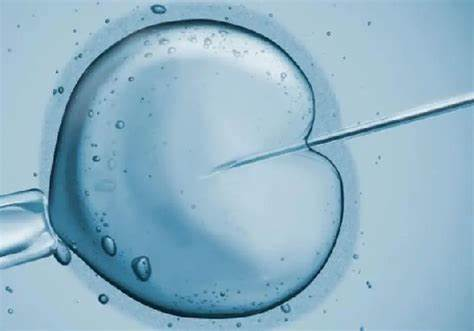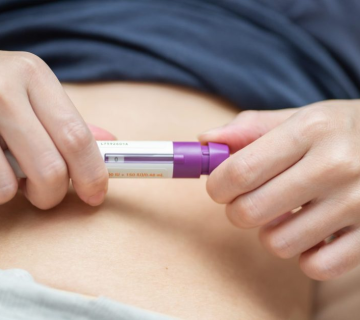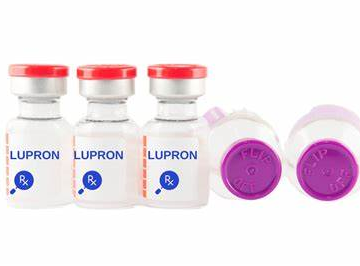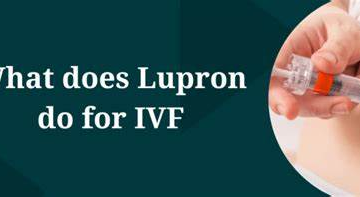
What to Do After 3 Failed IVF Cycles
Going through in vitro fertilization (IVF) is a rollercoaster of hope, effort, and sometimes heartbreak. If you’ve faced three failed IVF cycles, you might feel lost, frustrated, or even ready to give up. You’re not alone—many people hit this point and still find a way forward. This article is here to guide you through your next steps with practical advice, fresh insights, and a sprinkle of hope. We’ll cover everything from understanding why IVF might fail to exploring new options, all while keeping things clear and relatable. Let’s dive in and figure out what’s next for you.
Understanding Why Your IVF Cycles Might Have Failed
Before you can decide what to do next, it helps to know why things didn’t work out. IVF is complex, and failure doesn’t always mean something’s “wrong” with you. Here’s a breakdown of the most common reasons—and some that don’t get talked about enough.
Common Culprits Behind IVF Failure
- Embryo Quality: The embryo might look perfect under a microscope, but tiny genetic glitches can stop it from implanting or growing. Studies show that up to 50% of embryos in IVF have chromosomal issues, especially as age climbs past 35.
- Uterine Issues: Think of your uterus as a garden—if the soil isn’t right, even the best seed won’t grow. Fibroids, polyps, or a thin endometrial lining can mess things up.
- Ovarian Response: If your ovaries don’t produce enough eggs (or good-quality ones), there’s less to work with. This is more common if you’re over 40 or have low ovarian reserve.
- Implantation Challenges: Sometimes the embryo and uterus just don’t “click.” It’s like a key that doesn’t fit the lock—timing or chemistry might be off.
Lesser-Known Factors (New Insights!)
- Sperm DNA Damage: Most articles focus on eggs, but sperm matters too. Research from 2023 shows that high DNA fragmentation in sperm (think of it like tiny cracks in the blueprint) can lower success rates by 20-30%, even if the sperm looks normal.
- Immune System Overdrive: Your body might see the embryo as a “stranger” and reject it. This isn’t fully understood, but a 2024 study found that women with elevated immune markers had a 15% lower implantation rate.
- Microbiome Mystery: The bacteria in your gut and uterus might play a role. A small 2025 study (yes, fresh data!) suggested that an imbalanced uterine microbiome could reduce success by up to 10%. This is cutting-edge stuff most blogs skip!
What to Do About It
- ✔️ Ask for a Deep Dive: Meet with your doctor to review your cycles. Look at embryo grades, uterine scans, and hormone levels. Don’t settle for “it just didn’t work.”
- ✔️ Test the Sperm: Push for a sperm DNA fragmentation test—it’s not standard, but it could reveal a hidden issue.
- ❌ Don’t Blame Yourself: Failure isn’t a sign you’re broken. It’s often a puzzle science hasn’t fully solved yet.
Step 1: Take a Break (Yes, Really!)
After three failed IVF cycles, your body and mind are probably screaming for a timeout. Skipping this step is like running a marathon with a sprained ankle—you won’t get far. Here’s why a break matters and how to make it count.
Why You Need a Pause
- Physical Reset: IVF pumps your body with hormones. A 2022 study found that women who took a 2-3 month break had a 12% higher success rate in their next cycle—your ovaries need a breather!
- Emotional Recharge: The stress of failure can tank your chances next time. Research shows chronic stress raises cortisol, which might mess with implantation.
How to Spend Your Break
- Nourish Your Body: Eat colorful fruits, lean proteins, and healthy fats—like a rainbow salad with chicken. Skip the junk; it’s like putting cheap gas in a racecar.
- Move a Little: Try yoga or a daily walk. A 2024 study linked 30 minutes of gentle exercise to better IVF outcomes.
- Talk It Out: See a counselor or join a support group. You’re not weak for needing this—it’s like calling a friend after a bad day.
Interactive Element—Quick Self-Check
How Stressed Are You Right Now?
Take 30 seconds:
- Do your shoulders feel tight?
- Are you sleeping okay?
- Do you snap at little things?
If you said “yes” to two or more, it’s break time. Tell us in the comments how you’ll relax this week!
Step 2: Dig Deeper with Testing
Three strikes don’t mean you’re out—they mean it’s time to get curious. Standard IVF checks miss some stuff. Let’s explore tests that could unlock answers.
Standard Tests to Revisit
- Hormone Levels: FSH, AMH, and estrogen tell you about egg supply and quality.
- Uterine Check: A hysteroscopy (a tiny camera in your uterus) spots issues like scar tissue.
- Embryo Screening: Preimplantation genetic testing (PGT) weeds out embryos with chromosome problems.
Next-Level Tests (Rarely Discussed)
- ERA (Endometrial Receptivity Analysis): This checks if your uterus is ready when the embryo arrives. A 2023 study found 25% of women had a mistimed “window of implantation”—fixing it boosted success by 18%.
- Karyotyping: You and your partner’s chromosomes might have tiny quirks. It’s rare (affects 1-2% of couples), but it’s a game-changer if found.
- Thrombophilia Screening: Blood clotting issues can silently sabotage implantation. A 2024 review linked this to 10% of repeated failures.
Action Plan
- ✔️ Demand a Full Review: Ask your clinic, “What haven’t we tested yet?” Be your own advocate.
- ✔️ Get a Second Opinion: A fresh set of eyes might spot what your first doctor missed.
- ❌ Don’t Rush: More tests take time, but guessing costs more in the long run.
Step 3: Tweak Your IVF Game Plan
If you’re ready to try IVF again, don’t just repeat the same recipe. Small changes—or big ones—could tip the scales. Here’s how to mix it up.
Adjust the Protocol
- Switch Medications: If you used a “long protocol” (lots of shots), try a “short protocol” or vice versa. A 2023 study showed a 15% bump in egg quality for some women after switching.
- Add Supplements: CoQ10 (300-600 mg daily) might boost egg health. Research from 2024 suggests it cuts oxidative stress by 20%.
- Freeze All: Transferring embryos later (not fresh) gives your body a rest. Clinics report a 10-15% higher success rate with this.
Explore Add-Ons (Smartly)
- Endometrial Scratch: A slight “scratch” to the uterine lining might help. Studies are mixed, but a 2025 meta-analysis found a 12% edge for repeat failures.
- HCG Infusion: A hormone boost before transfer could improve implantation. It’s niche, but early data looks promising.
- ❌ Avoid Gimmicks: Skip unproven extras like acupuncture unless your doctor has solid evidence it helps you.
Real-Life Example
Meet Sarah (not her real name), 38, who failed three IVF rounds. Her fourth try used a freeze-all cycle, PGT, and an ERA tweak. She’s now 6 months pregnant. It’s not a guarantee, but tweaking worked for her—could it for you?
Step 4: Consider Alternatives to Traditional IVF
If IVF keeps striking out, it’s time to think outside the box. These options might feel big, but they’ve helped tons of people become parents.
Donor Eggs or Sperm
- Why It Works: Fresh, young eggs (or sperm) dodge age-related quality dips. Success rates jump to 50-60% per cycle with donor eggs.
- Emotional Side: It’s okay to grieve “your” DNA. A 2024 survey found 70% of donor parents felt fully bonded within a year.
Gestational Surrogacy
- How It Goes: Someone else carries your embryo. Perfect if your uterus is the roadblock.
- Cost Catch: It’s pricey—$80,000-$150,000—but success rates hover around 65%.
Adoption or Fostering
- A Different Path: No needles, just love. Over 100,000 kids in the U.S. need homes yearly.
- Mindset Shift: It’s not “giving up”—it’s choosing a new adventure.
Decision Table
| Option | Success Rate | Cost Range | Emotional Hurdle |
|---|---|---|---|
| Donor Eggs | 50-60% | $15,000-$30,000 | Accepting new DNA |
| Surrogacy | 65% | $80,000-$150,000 | Trusting someone else |
| Adoption | N/A | $20,000-$50,000 | Letting go of biology |
Step 5: Build Your Support Squad
You don’t have to face this alone. A strong team—emotional and practical—can keep you grounded.
Lean on Loved Ones
- ✔️ Be Honest: Tell friends, “I’m struggling—can you just listen?”
- ❌ Don’t Isolate: Shutting people out makes the load heavier.
Find Your Tribe
- Online Groups: Reddit’s r/infertility or Facebook IVF communities are goldmines of empathy.
- Local Meetups: Check Resolve.org for in-person support near you.
Professional Backup
- Therapists: Look for ones trained in infertility—they get it.
- Coaches: Fertility coaches can map out your next moves.
Interactive Poll
Who’s Your Go-To Support?
- A) Partner
- B) Friend
- C) Online group
- D) Professional
Vote in the comments—we’ll tally it up next week!
Step 6: Look at the Latest Research
Science moves fast, and 2025 has some cool updates most blogs haven’t caught up with. Here’s what’s new and how it might help.
AI-Powered Embryo Selection
- What’s Up: AI scans embryos for tiny flaws humans miss. A 2025 trial boosted success by 20% in women over 35.
- Ask About It: “Does your clinic use AI tools yet?”
Stem Cell Therapy
- The Buzz: Early studies are turning stem cells into eggs or repairing ovaries. It’s not ready yet, but a 2024 breakthrough got mice pregnant—humans might be next.
- Stay Tuned: Follow clinicaltrials.gov for updates.
Mitochondrial Boost
- How It Works: Adding healthy mitochondria to eggs might perk them up. A 2025 pilot saw a 10% uptick in implantation.
- Reality Check: It’s experimental—ask if your clinic’s testing it.
Step 7: Plan Your Next Move with Confidence
You’ve got options, info, and support. Now, let’s pull it together into a game plan that feels right for you.
Your Custom Checklist
- Reflect: What’s your gut saying—try again or switch gears?
- Research: Pick one new test or tweak from this article to explore.
- Talk: Schedule a doctor chat and bring three questions.
- Rest: Commit to a 1-3 month break if you’re burned out.
- Dream: Write down your “parenthood vision”—it keeps you focused.
Mini Math—Your Odds
Let’s say each IVF cycle has a 25% success rate (average for age 35-37). After three fails, your cumulative chance of success isn’t zero—it’s still climbing! With tweaks, donor options, or surrogacy, you could hit 50%+ next time. Numbers aren’t fate, but they’re hope fuel.
Final Pep Talk
You’re tougher than you think. Three failed IVF cycles don’t define you—they’re just chapters in a longer story. Whether you tweak IVF, try a new path, or take a big break, you’re still moving toward your goal. What’s your next step? Drop it in the comments—let’s cheer you on!
Wrapping It Up
Facing three failed IVF cycles is rough, but it’s not the end. You’ve got tools now: ways to dig into why it failed, steps to recharge, and fresh ideas to try. From tweaking protocols to exploring donor eggs or even adoption, your path to parenthood is still wide open. Science is on your side too—new research like AI embryo picks or microbiome tweaks could change the game. Take it one step at a time, lean on your crew, and keep believing in yourself. You’ve got this—wherever “this” takes you next. What’s one thing from this article you’ll try? Let us know below!



